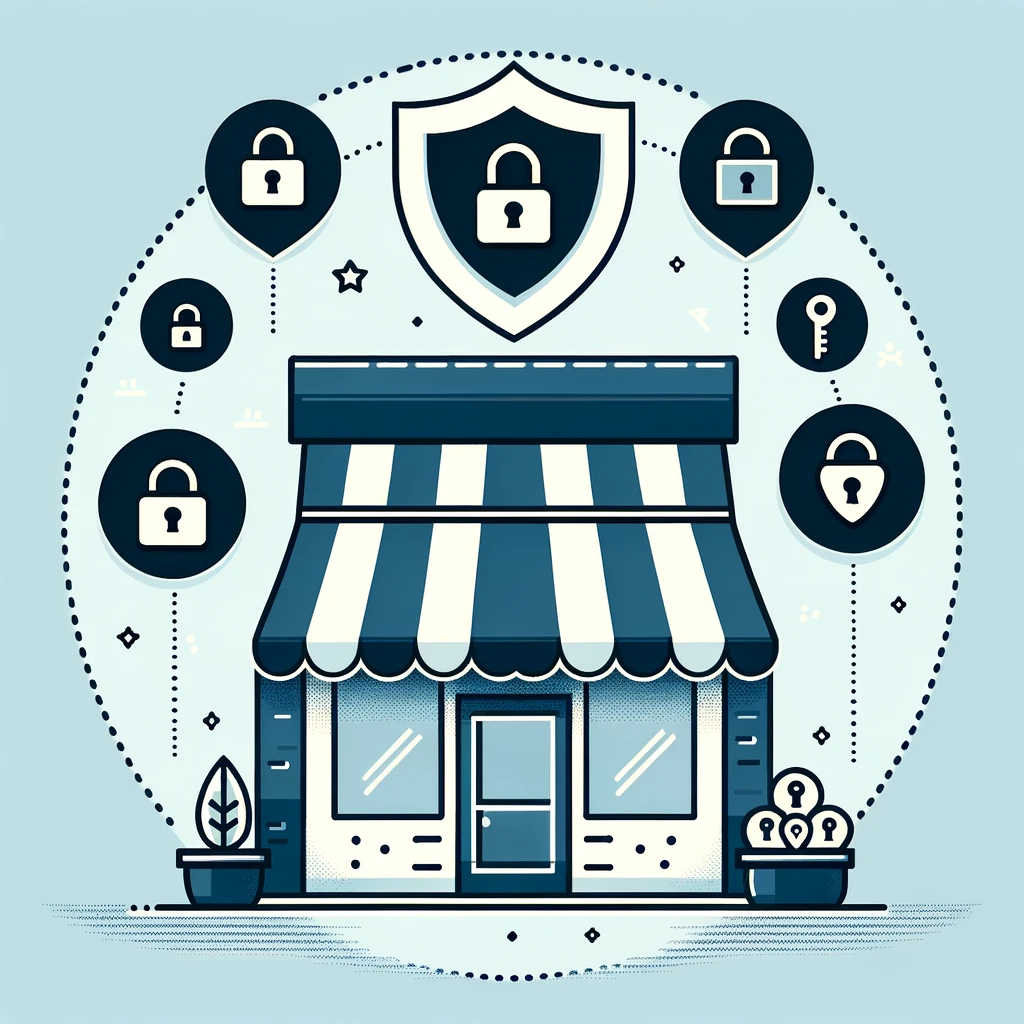At its core, Multi-Factor Authentication, or MFA, is all about adding layers to your security protocols. Imagine your data is in a vault. MFA adds not just a second key, but may even include a code or a biometric check to ensure that only the right people gain access. Let’s dive into integrating MFA with existing systems and applications!

There are three main types of authentication factors:
- something you know, such as a password or PIN
- something you have, like a smartphone or a security token
- something you are, which refers to biometric verification methods such as fingerprints or facial recognition.
Incorporating MFA can significantly decrease the risk of unauthorized access. It’s more than compliance. MFA is a proactive stride toward safeguarding your systems against data breaches and cyber threats. Moreover, with consumers increasingly concerned about privacy, MFA serves as a testament to your commitment to security.
Key Takeaways
- Enhance security with Multi-Factor Authentication (MFA) to protect sensitive data.
- Evaluate current security measures and identify critical systems.
- Choose an MFA solution that balances security with user convenience.
- Ensure ongoing maintenance and updates for robust MFA protection.
Evaluating Your Current Security
As a first step, a thorough evaluation of your current security measures is crucial. This step is about locating the weaknesses. Further, it’s about ensuring your foundation is strong enough to support the MFA infrastructure you intend to establish.
Second, you’ll need to catalog all your systems – from email to customer databases. Ask yourself, which of these holds sensitive data? Which are critical to your operations? This assessment is not a task to rush; it demands attention to detail and an understanding of where protection is most imperative.
In parallel, take a good look at your compliance landscape. Data protection regulations can be stringent, and non-compliance can cost you dearly. Does your industry require specific authentication measures? Are your global operations subject to varying rules? Aligning MFA setup with these requirements is a non-negotiable part of the process.
Finally, document your findings. A comprehensive report will give you the clarity you need to move forward, providing a benchmark against which you can measure your progress as you integrate MFA into your systems. Remember, this document will be your reference as you advance to the next major phase: choosing your MFA solution.
Choosing the Right MFA Solution for Your Business
Integrating multi-factor authentication (MFA) into an existing system can feel like navigating a maze. This section provides essential tips to help you pick an MFA solution that aligns with your business needs.
When it comes to selecting an MFA solution, it’s not just about adding layers of security. It’s about finding a balance between robust security and user convenience. Consider:
- the type of business you run
- the sensitivity of the data involved
- your user demographic
Understand Your Business Needs
Your business type influences your MFA requirements. Retail businesses may prioritize transaction security, while healthcare providers need to secure patient data and meet security regulations like HIPAA. Evaluate your specific industry needs to choose the right MFA features. Also, consider your business’ size and growth projections to ensure your solution is as scalable as your business.
Don’t forget about future needs. Scalability is crucial. You want a solution that grows with your business and adapts to the evolving security landscape. Your chosen MFA system should be nimble enough to incorporate future technological advancements like biometrics or behavioral analytics.
Assess Data Sensitivity
The sensitivity of the data your business handles is a critical factor. More sensitive data demands stronger security measures. This includes the authentication methods such as biometric or hardware tokens for highly sensitive data. Determine the level of protection required for different types of data. You also need to ensure compliance with data protection regulations such as GDPR and CCPA.
The most suitable MFA solution should also respect privacy and regulatory requirements. Ensure it complies with GDPR, CCPA, or other pertinent regulations that impact your operation.
Know Your User Demographic
Understanding your user demographic helps in selecting an MFA solution that users will adopt willingly. Consider their tech-savviness, access to devices, and general attitudes toward security measures. Choose MFA methods that fit users habits such as mobile app authentication or hardware tokens.
Explore Various Vendors Before You Buy
Explore various vendors and their reputation in the market. Read reviews, compare features, and ask for recommendations. It’s prudent to choose a vendor with a proven track record of reliability and strong customer support.
Evaluate whether a solution fits into your current ecosystem without causing major disruptions. Can it integrate with your existing platforms? Will it support the authentication methods your users prefer? These questions are fundamental to your decision-making process.
The right choice today will pave the way for a seamless transition to MFA, enhancing security without causing friction for your users. In the following section, I’ll outline how to turn the choice you’ve just made into action through the integration process.
The Technical Integration Process
When it comes to integrating multi-factor authentication (MFA) into your existing systems, it’s essential to handle the technical aspects with care. A seamless transition depends on following a structured approach. Your goal is to secure sensitive data and provide ease of access to authorized users without hindering productivity.
Start with a detailed plan for incorporating MFA. Pull together a cross-functional team that includes IT, security, and possibly key business stakeholders. You need to identify which systems will be integrated first based on sensitivity and user impact. For instance, your customer data management system might be priority one due to its high risk of exposure.
In terms of implementation, you’ll likely be dealing with APIs (Application Programming Interfaces) and SDKs (Software Development Kits) provided by your MFA solution vendor. APIs enable your existing systems to communicate with the MFA service, while SDKs are typically used to build custom applications. Make sure your developers are well-versed with these tools.
One challenge often encountered is compatibility. You must confirm that your current setup can support the MFA solution. Sometimes, upgrading or replacing legacy systems might be the only option to ensure a smooth MFA integration. It’s important to factor in these potential additional costs and workload to your integration plan.
Once the integration foundation is set, focus on the deployment phase. It should be both systematic and phased. Typically, the best practice is to start with a pilot group of users. Monitor closely for any issues and gather feedback. Agile adjustments play a crucial role in addressing any technical hiccups swiftly.
Successfully rolling out MFA sets the stage for the equally crucial task of user training and support. I’ll share insights on how to prepare your team for the transition and ensure ongoing, hassle-free use of the MFA system in the next section.
Training and Supporting Your Users
It’s crucial that integrating MFA into your system is not just about technology but also heavily involves the people using it every day. I emphasize that a thorough training program is essential for ensuring that everyone understands the new security processes and feels comfortable using them. Without proper training, you risk reducing the effectiveness of MFA due to user error or non-compliance.
To begin, develop a comprehensive training plan that covers the basics of MFA. Explain why MFA is vital for the organization’s security and demonstrate how it works. This education should also show users how to set up their authentication factors for the first time, guiding them through each step, from inception to daily use.
Beyond the initial education, focus on designing an authentication process that’s as user-friendly as possible. Present the process in a series of clear, actionable steps. If your MFA solution offers biometric options, such as fingerprint or facial recognition, or if it uses authentication applications on mobile devices, provide demonstrations to illustrate proper use. Regular workshops and refresher courses can help maintain awareness and ensure best practices are followed.
Finally, acknowledge that even the best system can encounter issues, so create a robust support system. Make sure help resources are easily accessible. This might mean setting up a dedicated helpdesk for MFA inquiries, creating detailed FAQs, or providing on-demand support through employment of in-house experts or external vendors. Being proactive in support means users are more likely to engage with the system positively and report any issues before they become serious problems.
Maintaining and Updating Your MFA Setup
I understand the temptation to set up multi-factor authentication (MFA) and assume you’re done with security duties. However, the truth is that maintaining and updating your MFA setup is crucial to staying ahead of ever-evolving cyber threats.
Regular system reviews are your first line of defense. Schedule them. Mark your calendar. These reviews help you ensure the MFA system is running as expected and that you’re in compliance with the latest security protocols.
Updates are not mere suggestions; they’re essential. When your MFA provider rolls out an update, it often patches vulnerabilities and enhances features. Missing an update could mean leaving a door open for cybercriminals.
Stay vigilant against threats by keeping abreast of the latest security trends and adjusting your MFA settings accordingly. Cybersecurity is a moving target, and your practices need to move with it.
Don’t forget the human element. Regularly audit the user experience and refine it. If your employees find the MFA system cumbersome, they may look for workarounds that compromise security. Aim for a balance between robust security and user convenience.
If my advice seems overwhelming, take a deep breath and remember: security is about diligence, not perfection. Keep your MFA system nimble, responsive, and aligned with the latest security trends, and you’ll create an environment where safety is the norm and not the exception.
Questions? We Have Answers.
Get answers to a list of the most Frequently Asked Questions.

Experienced cybersecurity analyst, software engineer, patent attorney, worked with Linux, Windows, AWS, lots of security tools. Hope to help people do the right things and do the things right!


